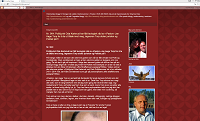| Reasons Why the Resurrection is Believable
If true, the resurrection of Jesus Christ from the dead is the single most important event in the history of mankind, and therefore the one most crucial to establish as an authentic historical event. In fact, the resurrection is the very linchpin of the Christian faith, holding together every claim and every blessing. If the resurrection could be proven a fraud, Christianity would disintegrate as a total fabrication with little redeeming merit. Jesus would not even be an example of a “good moral teacher,” as some maintain, for his most important prediction—that he would be raised from the dead—would be found a lie.
As Christians, our very salvation depends in large part upon the reliability of the four historical records of the birth, life, death, and especially the resurrection of Jesus Christ. A deeply held belief in the resurrection as a fact of history is a vital element for our eternal salvation. Romans 10:9 asserts: “That if you confess with your mouth, ‘Jesus is Lord,’ and believe in your heart that God raised him from the dead, you will be saved.” We are trifling with the bedrock of our salvation when we entertain doubts about the historical accuracy of any part of Scripture. But most crucial are those parts that make historical claims upon which our salvation depends.
Therefore, those who argue that the historicity of the resurrection is not provable and even unnecessary are contradicting the testimony of the apostolic witnesses. Indeed, the Apostle Paul’s entire ministry was built upon the foundation of the resurrection, and it was his personal encounter with the risen Christ that caused him to develop an unassailable conviction in the reality of this event. In the following verses, we have highlighted in bold type Paul’s statements of the consequences to the Christian faith if the resurrection of Christ did not, in fact, happen.
1 Corinthians 15:14-20
(14) And if Christ has not been raised, our preaching is useless and so is your faith.
(15) More than that, we are then found to be false witnesses about God, for we have testified about God that he raised Christ from the dead. But he did not raise him if in fact the dead are not raised.
(16) For if the dead are not raised, then Christ has not been raised either.
(17) And if Christ has not been raised, your faith is futile; you are still in your sins.
(18) Then those also who have fallen asleep in Christ are lost.
(19) If only for this life we have hope in Christ, we are to be pitied more than all men.
(20) But Christ has indeed been raised from the dead, the firstfruits of those who have fallen asleep.
Later in his life, Paul’s public testimony to the resurrection of Jesus Christ and his proclamation of the Gospel in Ephesus caused such an uproar that the Roman authorities took him into protective custody lest he be killed by the Jews. After several appeals according to Roman Law, Paul found himself standing before King Agrippa, his last level of appeal before the Emperor himself.
Given permission to speak freely, Paul launched into a passionate account of his life, culminating with his encounter with the risen Christ on the road to Damascus. When Paul then verified the resurrection from Old Testament prophecy, the governor, Festus, interrupted him and told him he was crazy. The truth of Paul’s brilliant reply remains emblazoned across the pages of human history.
Acts 26:25 and 26
(25) “I am not insane, most excellent Festus,” Paul replied. “What I am saying is true and reasonable.
(26) The king is familiar with these things, and I can speak freely to him. I am convinced that none of this has escaped his notice, because it was not done in a corner.”
Amen! And that is why, taken together, the following historical proofs of the resurrection of Jesus Christ present evidence that is beyond a reasonable doubt.
1. The resurrection narratives have the ring of historical truth
The resurrection narratives bear unmistakable signs of being historically accurate. The earliness of these accounts, at a time when hostile witnesses were present, would have made a fabrication unlikely and dangerous. There is agreement on the main facts and great variety in the witnesses given, yet they are not a mere repetition of some standardized story with all the discrepancies worked out. Indeed, the accounts of Christ’s resurrection appearances are clearly independent of one another, as their surface dissimilarities suggest. Deeper scrutiny, however, reveals that these appearances are non-contradictory. Henry Morris writes:
It is a well-known rule of evidence that the testimonies of several different witnesses, each reporting from his own particular vantage point, provide the strongest possible evidence when the testimonies contain superficial contradictions that resolve themselves upon close and careful examination. This is exactly the situation with the various witnesses to the resurrection.[1]
2. The Apostle Paul’s life and ministry is a strong witness of the resurrection
At the time Paul met the resurrected Christ, he was an ardent antagonist to the Christian faith. A highly educated man, he was not easily persuaded of anything that appeared contrary to or inconsistent with the Mosaic traditions. It could be said that he would have been the last person on earth to accept the idea of a crucified and resurrected Messiah based on the Jewish expectations of the time. The fact that he became so fully persuaded of the resurrection of Christ that he completely dedicated his life to his risen Lord is powerful evidence of the reality of the resurrection. Canon Kennett writes:
Within a very few years of the time of the crucifixion of Jesus, the evidence for the resurrection of Jesus was, in the mind of at least one man of education [the Apostle Paul], absolutely irrefutable.[2]
3. The empty tomb is a historical given
No reputable New Testament historian doubts the historical fact that the tomb in which Christ was placed after his crucifixion was empty. Therefore, there are only three explanations for it. Either his enemies took the body, his friends took the body, or Jesus was raised from the dead. The first possibility is extremely unlikely, because his enemies would have certainly displayed his body if they could have, in order to humiliate his disciples, quell the rumors of his resurrection, as well as to cut short any new religious movement that threatened their Mosaic traditions.
It is equally unlikely that his friends would have taken his body, because after his crucifixion they were profoundly disappointed and discouraged men who did not believe that he would be resurrected. It is absurd to think that under these conditions they would invent a scheme in which they would steal away the body to fabricate a story they obviously did not believe.
4. The disciples were devout Jews
The disciples were Jews who took seriously their Jewish privileges and obligations. Therefore, it is unthinkable that they would have been party to making up a new religion for personal gain. To a first-century Jew, such an act was equivalent to lying against the God of Israel, as Paul argues in 1 Corinthians 15:12-19 (where he called it “bearing false witness,” contrary to one of the Ten Commandments). For a first-century Jew, lying against God and perverting His revelation would mean risking one’s salvation and future participation in the Messianic Kingdom. Would such a person risk divine retribution for a few years of prestige as a leader of a new religion? The answer can only be an emphatic no.
5. The testimony of women
The presence of women at the tomb is strong evidence that the biblical record is true. Women had virtually no credibility in the first-century Jewish culture, and their testimony in a court of law was considered worthless. For example, if a man was accused of a crime that only women witnessed, he could not be convicted on that basis. If the account of Jesus’ resurrection were a fable added later in an attempt to authenticate Christianity, why would the record have women be the first to see him and testify to the empty tomb, unless it had really happened that way? Women bringing testimony of his resurrection that is then denied by the male disciples makes the latter look bad, and these men were the first leaders of the Christian Church. A fabricated story added later by the Church would certainly have painted their first leaders in a more favorable light.
6. Jewish propaganda presupposes the empty tomb and the missing body
The Jewish Temple authorities paid those who had seen the tomb empty to lie and say that the disciples had stolen the body, and they even murdered many of those who preached about his resurrection. With such a powerful incentive to squash the new movement, they would have stopped at nothing to produce Jesus’ dead body if they could have. The fact that they did not means they could not because he was risen.
7. His enemies would have produced his dead body to silence the believers
If he did not rise from the dead, what became of his body? If his enemies stole it and never showed it openly, that would have encouraged the very rumors of a resurrection that they were very anxious to prevent. But the decisive proof that his enemies did not take the body is that they surely would have quickly produced it with great fanfare, for they stopped short of nothing to discredit the story. As William Lane Craig argues, “This is historical evidence of the highest quality, since it comes not from the Christians but from the very enemies of the early Christian faith.”[3]
8. There was no veneration of the tomb
If Jesus was not resurrected, why is there no record of his disciples venerating his tomb as so often happens to religious leaders? Though God forbade it, the practice continued among the Israelites to the point that God Himself disposed of the bodies of Elijah and Moses lest their followers venerate their gravesites.
9. A non-Christian historian testifies in support of the resurrection
Josephus, the first-century Jewish historian, wrote about Jesus Christ and the growth of Christianity as follows:
And when Pilate, at the suggestion of the principal men amongst us, had condemned him to the cross, those that loved him at the first did not forsake him; for he appeared to them alive again the third day; as the divine prophets had foretold these and ten thousand other wonderful things concerning him. And the tribe of Christians, so named from him, are not extinct at this day.[4]
Though some have tried to dismiss this corroborating secular testimony as fraudulent, this is unlikely because Josephus’ writings were well received at the time of their writing by both Jews and Romans. He was even made an honorary Roman citizen.
There is no record of any objection being raised to this passage by early detractors of Christianity, and had this been a fraudulent and late insertion into the writings of Josephus, this fact would have been openly debated in the literature of the day. Because this did not happen, the silence of the critics is damning to their cause.[5]
10. No alternative explanations in the early non-scriptural sources
There is no alternative explanation for the rise of the Christian Church given in early historical sources that would even attempt to give the “real” story. In the event that the story was fabricated, surely some critic or disgruntled “ex-christian” would have attempted such an alternative explanation. But the only adequate explanation for the rise of the Church that has ever been given is that the early Christians believed Jesus had been raised from the dead.
11. The biblical records of the resurrection appearances give unified witness
The Four Gospels and the Apostle Paul give a unified witness of ten resurrection appearances. Because these records are harmonious and non-contradictory, the burden of proof is upon those who would say that they do not tell the truth.
The ten resurrection appearances, in their likely order, are as follows:
- To Mary Magdalene (Mark 16:9; John 20:11-18)
- To the other women (Matt. 28:8-10)
- To Peter (Luke 24:34; 1 Cor. 15:5)
- To the two men on the road to Emmaus (Mark 16:12; Luke 24:13-35)
- To eleven of the disciples (except Thomas—Luke 24:33-49; John 20:19-24)
- To the twelve a week later (John 20:24-29; 1 Cor. 15:5)
- To seven disciples by the Sea of Tiberias (John 21:1-23)
- To five hundred followers (1 Cor. 15:6)
- To James (1 Cor. 15:7)
- To the twelve at the ascension (Acts 1:3-12)[6]
12. The idea of Christ’s new body was a totally foreign concept
The disciples had enough trouble believing that Christ would die and then be raised, and would never have even conceived of the idea of the Messiah having a different body. It is virtually inconceivable that early Christians fabricated such a story, which even today sounds like science fiction to many doubters.
13. Modern scholars and historians admit that there is strong evidence of his bodily resurrection
J. P. Moreland confirms this and quotes other scholars:
Almost no New Testament scholar today denies that Jesus appeared to a number of his followers after his death. Some scholars interpret these as subjective hallucinations or objective visions granted by God which were not visions of a physical being. But no one denies that the believers had some sort of experience. The skeptical New Testament scholar Norman Perrin admitted: “The more we study the tradition with regard to the appearances, the firmer the rock begins to appear upon which they are based.” Dunn, professor of divinity at the University of Durham, England, agrees: “It is almost impossible to dispute that at the historical roots of Christianity lie some visionary experiences of the first Christians, who understood them as appearances of Jesus, raised by God from the dead.”[7]
Thomas Arnold, former Professor of History at Rugby and Oxford, and one of the world’s greatest historians, made the following statement about the historical evidence for the resurrection of Jesus Christ:
I know of no one fact in the history of mankind which is proved by better, fuller evidence of every sort, to the understanding of a fair enquirer, than the great sign which God hath given us that Christ died, and rose again from the dead.[8]
Simon Greenleaf is one of the most highly regarded legal minds ever seen in America. He was an expert on the laws of evidence, and the founder of the Harvard Law School. He analyzed the accounts in the Four Gospels of the resurrection of Christ in terms of their validity as objective testimonial evidence, and concluded:
It was therefore impossible that they could have persisted in affirming the truths they had narrated, had not Jesus actually risen from the dead, and had they not known this fact as certainly as they knew any other fact.[9]
14. The conviction of his followers in the resurrection
Those who first published the story that Jesus had risen from the dead believed it to be a fact. They rested their faith not only on the fact of the empty tomb, but on the fact that they themselves had seen Jesus alive after his burial. He was seen not once or twice, but at least ten recorded times; and not just one at a time, but in groups of two, seven, ten, eleven, and five hundred.
15. The martyrdom of his followers for their belief in the resurrection
The first-century believers preached and acted with conviction about the truth of his resurrection, many of them even dying because of their belief. If his friends had stolen the body to make it look like he had been resurrected, they would have known that they were believing a lie, and men do not become martyrs for what they know to be false.
16. The unanimous testimony of eye-witnesses, who could not all have been deceived or deluded
Some critics say that the early Christians had a vision or an hallucination of Christ after his death, in the same way people today claim to have “seen” the pop icon Elvis Presley. Could it not have been an ecstatic vision? A dream? A fantasy of an excited imagination? Perhaps an apparition? None of these is at all probable, for different groups of people do not keep on seeing the same hallucination. 500 people in a crowd would not all dream the same dream at the same time.
Some modern Christian apologists have argued that it is irrelevant whether or not Christ actually was physically raised, because his “spirit” went to be with God. God then supposedly gave Christ’s followers a “vision” of Christ continuing to live “spiritually” at God’s side. Such a mystical and spiritualistic concept would not have satisfied the Hebraic mind of the disciples, however, who believed the dead to be dead until raised in a bodily, physical resurrection.[10] It would also have placed the Christian faith on a subjective, mystical basis without historical claims and would not account for the early disciples’ energetic witness of the bodily resurrection of Christ.
17. The unbelief of the disciples concerning his resurrection
With the exception of Joseph of Arimathea, the followers of Jesus did not believe that he would die and then be resurrected. They were not expecting the event, and when it happened they did not believe it at first. They considered it an “idle tale” (Luke 24:11– KJV). They did not believe it until they had to, when they were directly confronted by the risen Lord. Henry Morris writes:
One thing is certain: the disciples could not have fabricated the story of the resurrection from their own imaginations. On the contrary, they somehow failed to anticipate it even after such an abundance of prophetic preparation for it, both from the Scriptures and from Christ. It took the strongest of evidences to convince them it had actually taken place.[11]
18. The idea of a resurrected Messiah was a hard sell to the Jews and absurd to the Greeks
The picture of Jesus was not in keeping with current conceptions of what the Messiah would be like (a theocratic ruler who would deliver Israel from Gentile oppression) and it would have been hard to convince others of its truth. The Greeks, with their doctrine of the immortality of the soul, thought the idea of a bodily resurrection absurd and unnecessary (cp. Acts 17:32). If the disciples had invented an event or a doctrine around which to build a new religion, it would have been more in line with the standard expectations of the day.
19. He could have gotten out of the tomb only by resurrection
The “swoon” theory has proposed that Jesus was not really dead when they buried him, and that he “came to” again. But in that case, weak and exhausted, encased in heavy grave wrappings, he could scarcely have moved, much less removed the heavy stone door and gotten out of the tomb. Furthermore, the Roman authorities had sealed the door, and even if he had been successful in moving the stone, the guards would have rearrested him and further humiliated him. Since there is no record of such an event, it must not have happened, because his enemies would have made much of such a bizarre happening.
20. The very existence and growth of the Christian Church makes no sense if he was not raised
Some critics say that the resurrection was a later addition to the story of Christ, invented years later by the Church to glorify a dead hero. But it is known, from historical records outside Scripture, that the sect known as Christians came into existence in the reign of Tiberius, and that the thing that brought them into existence was their belief that Jesus had risen from the dead.
The resurrection was not a later addition to the Christian faith, but the very cause and incentive for it. They rested their faith, not on historical records, but on what they had seen with their own eyes. The records were the result of their faith, not the cause of it. Christianity hinges on the historical fact of Christ’s resurrection, for without it the entire faith is found fraudulent. Had there been no resurrection, there would have been no New Testament, and no Christian Church.
21. The disciples had nothing to gain by fabricating a story and starting a new religion
His followers faced hardship, ridicule, hostility, and martyrs’ deaths. In light of this, they could never have sustained such unwavering motivation if they knew what they were preaching was a lie. Religion had its rewards for them, but those rewards came from a sincere belief that what they were living for was true.
22. The unanimous testimony of the early Christian leaders
If the empty tomb and resurrection was a fabrication, why did not at least one of the disciples break away from the rest and start his own version of Christianity? Or why did not at least one of them reveal the claim as a lie? The Temple authorities were willing to pay good money to anyone who would provide such information. Or if money was not alluring enough, what about the possibility of proving the resurrection a lie in order to draw disciples away to follow some enterprising would-be cult leader? History has shown that this role is a popular one, and this would have been a golden opportunity.
Without the strong and persuasive evidence of the resurrection, the continued unity of the early Christian leaders is inexplicable in light of the human tendency to want to promote oneself. The assumption that they were all committed to the truth of their message is the only adequate explanation of their continued unity and the lack of any revelation of fraud. Those who lie for personal gain do not stick together very long, especially when hardship decreases the benefits.
23. All of the alternate explanations proposed for the resurrection lack credibility
In light of the evidence of the empty tomb, the resurrection appearances and the rise of the Christian Church, a reasonable person should conclude that the resurrection of Jesus Christ is a well-established historical fact. In a court of law, such evidence would compel conviction unless contradictory evidence could be brought forward to introduce “a reasonable doubt.” But all alternate explanations and theories are extremely doubtful and counter-intuitive.
Therefore, Christians are being rational, sensible, and fully consistent with common sense when they rest their faith on this well-established historical event. Not only is there compelling historical evidence to back the belief, but extravagant benefits in the future are promised to those who believe it.[12] According to the Bible, the only sure promise of everlasting life for mankind, both individually and collectively, depends upon belief in the resurrection of Jesus Christ. As Halley writes:
“What a hale of glory this simple belief sheds on human life. Our hope of resurrection and life everlasting is based, not on a philosophic guess about immortality, but an historic fact.”[13]
Endnotes:
1. Henry Morris, The Defender’s Bible (World Publishing, Grand Rapids, 1995), p. 1576. Back to top
|



















